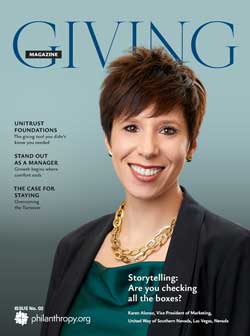Whether you’re kicking off a fledgling planned giving program or you’re comfortably positioned with a legacy society, it doesn’t take a data scientist to help you find your best prospects.
It DOES, however, start with your donor data.
Here’s why data is essential.
We may think we know what makes our donors “tick” but chances are we are also making some assumptions with no – or little – basis in fact. The human brain is amazing, but it also has limitations. Present it with a bunch of data points and it begins to engage in confirmation bias. Work WITH the data to find out the impartial facts.
Besides being impartial, data also allows us to segment:
- By demographics
- By donor type (major, annual, etc.)
- By type of prospect
- By screening scores and ratings
- By models and deciles
Here’s what we already know about planned givers:
- Longevity on the file
- Frequency of giving (for instance, 8 gifts over 10 years)
- Recency of giving
- Cumulative amount given
- Higher education levels
- Usually female
- Widowed, divorced or childless
Are there donor behaviors that are unique to your institution?
- Graduating from a particular school or program
- Event attendance
- Program-specific donations
- Volunteering
So here are some simple ways to start segmenting:
- Major donors
- Donors to the annual fund
- In memory of or in honor of donors
- Program specific donors
- Geographic clusters of donors
You can then focus in by doing some simple sub-segmentation. For instance:
Existing major donor + likely life income or blended gift prospect + age >55
OR
Loyal annual donor + high potential bequest prospect + age >65
EASY PLANNED GIVING SEGMENTATION FOR THE YOUNG NONPROFIT OR SMALL SHOP
Look at the information you already have on hand.
- Number of years giving – people with longevity in the database with a record of giving which increases incrementally can be excellent planned giving prospects.
- Number of gifts made in a year
- Increase in giving amount
- Event attendance
- Volunteer status – volunteering can indicate greater affinity to your causes
- Gender
- Marital status
- Children?
- Age
Keep in mind age and mortality — we are all getting older every day. Not to be depressing, but the oldest Boomers are now on the other side of 70. And while it’s great to obtain a planned gift intention from a 45-year-old, you are more likely to realize a planned gift from an 80-year-old, as actuarial tables prove.
USING RFM TO FIND POTENTIAL PLANNED GIVING PROSPECTS
RFM is an acronym for recency, frequency, and money. In other words, how recently did the donor give, how often do they give and how much do they give each time and cumulatively? The highest score for each ranking is 100, so the closer a person is to a total RFM score of 300, the higher likelihood they will make a planned gift if given the opportunity. Focus on those in your database with a total RFM >225 for best results.
SEGMENT USING VENDOR RATINGS
If you’ve paid for a wealth screening of your database, be sure to use those scores. Donor Search’s DS score, WealthEngine’s P2G score or iWave’s ProScore come to mind. Cross-tab by capacity rank and giving to your organization. Many vendors overlay an RFM score as part of their service, so take advantage of that.
[Originally published at Accuity Consulting, LLC]



